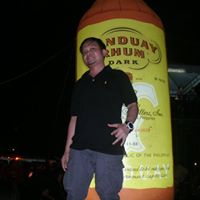Peter M Yee
age ~53
from Hicksville, NY
- Also known as:
-
- Peter N Yee
- Peter M Cis
Peter Yee Phones & Addresses
- Hicksville, NY
- 15229 Fernhill Dr, Austin, TX 78717 • 5123887638
- 3501 Shoreline Dr, Austin, TX 78728 • 5122184762
- 19106 High Canyon Ln, Tomball, TX 77377 • 2812553938 • 2812909424 • 7132909424
- 13050 Champions Park Dr, Houston, TX 77069 • 2814448857 • 2814448951
- Boca Raton, FL
- Tamarac, FL
- 19106 High Canyon Ln, Tomball, TX 77377 • 2817874787
Work
-
Position:Account executive
Education
-
School / High School:Leonard N. Stern School of Business at New York University- New York, NY1998
-
Specialities:Bachelor of Science in Finance and International Business
Emails
Lawyers & Attorneys

Peter Yee - Lawyer
view sourceISLN:
922515842
Admitted:
1977
University:
UC Hastings COL, San Francisco, CA; Stanford Univ, Stanford, CA
Name / Title
Company / Classification
Phones & Addresses
President
Autek Lab Limited
Electric Equipment & Supplies-Retail
Electric Equipment & Supplies-Retail
488 A St. Anne's Road, Winnipeg, MB R2M 3E1
2042564048, 2042576556
2042564048, 2042576556
President
Autek Lab Limited
Electric Equipment & Supplies-Retail
Electric Equipment & Supplies-Retail
2042564048, 2042576556
Principal
Yee's Cleaners Group Inc
Repair Services
Repair Services
8 Renie Ln, Blauvelt, NY 10913
JOHNSON BO SING LLC
1019 E Main St, Stamford, CT 06902
778 60 St, Brooklyn, NY 11220
778 60 St, Brooklyn, NY 11220
President, Director
CLEANER SERVICES OF TEXAS INC
5967 S Loop E, Houston, TX 77033
7300 Mykawa Rd, Houston, TX 77033
17231 Theiss Mail Rte, Spring, TX 77379
7300 Mykawa Rd, Houston, TX 77033
17231 Theiss Mail Rte, Spring, TX 77379
Manager
NATANATION LLC
PO Box 1873, Cypress, TX 77410
17231 Theiss Mail, Spring, TX 77379
17231 Theiss Mail, Spring, TX 77379
124 NASSAU AVENUE LAUNDROMAT CORP
Vice Presi, Secretary, Vice President
THE SEGWAY EXPERIENCE, LLC
9022 Springcroft Ct #PETER YEE, Tomball, TX 77375
3914 Lost Oak Dr, Spring, TX 77388
3914 Lost Oak Dr, Spring, TX 77388
Resumes

Co-Founder, Chief Information Officer
view sourceLocation:
609 Mandarin Flyway, Cedar Park, TX 78613
Industry:
Oil & Energy
Work:
Pe Impact Outsourcing
Co-Founder, Chief Information Officer
The Frontline Group Jan 2012 - May 2016
Vice President - Data Services
Jones Energy, Inc. Jan 2012 - May 2016
It Director
The Frontline Group Aug 2006 - Dec 2011
Performance Management and Business Intelligence
The Frontline Group Apr 2004 - Dec 2005
Consultant
Co-Founder, Chief Information Officer
The Frontline Group Jan 2012 - May 2016
Vice President - Data Services
Jones Energy, Inc. Jan 2012 - May 2016
It Director
The Frontline Group Aug 2006 - Dec 2011
Performance Management and Business Intelligence
The Frontline Group Apr 2004 - Dec 2005
Consultant
Education:
The University of Texas at Austin 1996 - 2000
Bachelors, Bachelor of Business Administration, Marketing Klein High School 1992 - 1996
The University of Texas
Bachelors, Bachelor of Business Administration, Marketing
Bachelors, Bachelor of Business Administration, Marketing Klein High School 1992 - 1996
The University of Texas
Bachelors, Bachelor of Business Administration, Marketing
Skills:
Business Intelligence
Business Analysis
Strategic Planning
Project Management
Business Process Improvement
Process Improvement
Project Planning
Change Management
Management Consulting
Microsoft Office
Microsoft Sql Server
Organizational Development
Continuous Improvement
Database Design
Data Warehousing
Knowledge Management
Business Analysis
Strategic Planning
Project Management
Business Process Improvement
Process Improvement
Project Planning
Change Management
Management Consulting
Microsoft Office
Microsoft Sql Server
Organizational Development
Continuous Improvement
Database Design
Data Warehousing
Knowledge Management

Vice President
view sourceLocation:
New York, NY
Industry:
Computer Software
Work:
IBM since Oct 2008
Senior Software Engineer
Bank of New York Mellon Jan 2008 - Oct 2008
Senior Application Developer
HP May 2005 - Dec 2007
Senior Systems Engineer
HP May 1995 - May 2005
Systems Engineer
IBM Apr 1994 - Apr 1995
Associate Programmer
Senior Software Engineer
Bank of New York Mellon Jan 2008 - Oct 2008
Senior Application Developer
HP May 2005 - Dec 2007
Senior Systems Engineer
HP May 1995 - May 2005
Systems Engineer
IBM Apr 1994 - Apr 1995
Associate Programmer
Education:
Polytechnic University 1989 - 1994
BS, Computer Science
BS, Computer Science
Skills:
Java
Web Services
Software Development
Xml
Rest
Object Oriented Design
Javascript
C#
Ajax
Sparql
Soa
Xslt
Tomcat
Asp.net
Jquery
Eclipse
C++
Agile Methodologies
Software Development Life Cycle
Html5
Jsp
Rdf
Ant
Node.js
Sql
Javascript Libraries
React.js
Design Patterns
Django
Node
Core Java
Full Stack Development
Android Development
Angular
Cascading Style Sheets
Json
Web Services
Software Development
Xml
Rest
Object Oriented Design
Javascript
C#
Ajax
Sparql
Soa
Xslt
Tomcat
Asp.net
Jquery
Eclipse
C++
Agile Methodologies
Software Development Life Cycle
Html5
Jsp
Rdf
Ant
Node.js
Sql
Javascript Libraries
React.js
Design Patterns
Django
Node
Core Java
Full Stack Development
Android Development
Angular
Cascading Style Sheets
Json

Peter Yee
view source
Peter Yee
view source
Peter Yee
view source
Peter Yee
view source
Peter Yee
view sourceLocation:
United States

Peter Yee
view sourceLocation:
United States
Vehicle Records
-
Peter Yee
view source -
Address:6 Mitchell Ct, Hicksville, NY 11801
-
Phone:5169371863
-
VIN:WBAWL73547PX49559
-
Make:BMW
-
Model:3 SERIES
-
Year:2007
License Records
Peter M Yee
License #:
OTA00760 - Active
Category:
Occupational Therapy
Issued Date:
Sep 11, 2014
Expiration Date:
Mar 31, 2018
Type:
Occupational Therapist Asst.
Peter M Yee
License #:
OTA00760 - Active
Category:
Occupational Therapy
Issued Date:
Nov 9, 2014
Expiration Date:
Mar 31, 2018
Type:
Occupational Therapist Asst.
Us Patents
-
Method And System For Optimizing Configuration Classification Of Software
view source -
US Patent:7370039, May 6, 2008
-
Filed:Apr 5, 2005
-
Appl. No.:11/098824
-
Inventors:Kenneth Michael Ashcraft - Meadow Vista CA, US
Flavio Alvarenga Bergamaschi - Southampton, GB
Erin Christine Burke - Napa CA, US
Duy Huynh - Adelphi MA, US
Santhosh Rao - Austin TX, US
Duc J. Vianney - Round Rock TX, US
Peter Wai Yee Wong - Austin TX, US -
Assignee:International Business Machines Corporation - Armonk NY
-
International Classification:G06F 17/30
G06F 15/16 -
US Classification:707 3, 707 4, 707 5
-
Abstract:A method and system to minimize to redundancy in testing a new software system by utilizing a knowledge base is provided. The knowledge base may be represented in a form of a decision tree including leaf nodes which store previously tested optimal configurations. When the knowledge base does not contain an optimal configuration for the new software, an optimal solution for the new software system may be determined by adding a further decision tree branch to the initial decision tree. A desirable tree branch may be selected from a table including a predetermined set of desirable tree branches for each category of software. As a result, the number of solutions to be tested on the input software may be limited and cost and effort to run redundant tests on a software system may be reduced.
-
Method And System For Optimizing Configuration Classification Of Software
view source -
US Patent:7792772, Sep 7, 2010
-
Filed:Feb 7, 2008
-
Appl. No.:12/027734
-
Inventors:Kenneth Michael Ashcraft - Meadow Vista CA, US
Flavio Alvarenga Bergamaschi - Southampton, GB
Erin Christine Burke - Austin TX, US
Duy Huynh - Raleigh NC, US
Santhosh Rao - Austin TX, US
Duc J. Vianney - Round Rock TX, US
Peter Wai Yee Wong - Austin TX, US -
Assignee:International Business Machines Corporation - Armonk NY
-
International Classification:G06N 5/02
-
US Classification:706 46, 706 12, 706 21, 706 53
-
Abstract:A method and system to minimize to redundancy in testing a new software system by utilizing a knowledge base is provided. The knowledge base may be represented in a form of a decision tree including leaf nodes which store previously tested optimal configurations. When the knowledge base does not contain an optimal configuration for the new software, an optimal solution for the new software system may be determined by adding a further decision tree branch to the initial decision tree. A desirable tree branch may be selected from a table including a predetermined set of desirable tree branches for each category of software. As a result, the number of solutions to be tested on the input software may be limited and cost and effort to run redundant tests on a software system may be reduced.
-
Framework For Automatically Analyzing I/O Performance Problems Using Multi-Level Analysis
view source -
US Patent:7818630, Oct 19, 2010
-
Filed:Jan 18, 2006
-
Appl. No.:11/334666
-
Inventors:Richard Charles Hendrickson - Austin TX, US
Santhosh Rao - Austin TX, US
Peter Wai Yee Wong - Austin TX, US -
Assignee:International Business Machines Corporation - Armonk NY
-
International Classification:G06F 11/00
-
US Classification:714 47, 714 43
-
Abstract:A computer implemented method, data processing system, and computer usable code are provided for analyzing input/output problems. A monitoring agent collects input/output data from a plurality of levels in a multi-level input/output stack. The monitoring agent analyzes the input/output data from the plurality of levels to form an analysis. A determination is then made as to whether the analysis requires an action and an action is initiated in response to a determination that the analysis requires an action.
-
Smart Profiler
view source -
US Patent:7917677, Mar 29, 2011
-
Filed:Sep 15, 2008
-
Appl. No.:12/210263
-
Inventors:Maynard Johnson - Oronoco MN, US
Peter Wai Yee Wong - Austin TX, US -
Assignee:International Business Machines Corporation - Armonk NY
-
International Classification:G06F 13/24
G06F 9/45 -
US Classification:710260, 717154, 717158
-
Abstract:A method, system, and computer usable program product for a smart profiler are provided in the illustrative embodiments. An allowable number of interrupts for use by a profiler application is determined. A count number for a counter is determined. The counter is configured to count occurrences of an event in a data processing system up to the count number. An interrupt is raised when the counter has counted the occurrences of the event up to the count number. The interrupt is processed. The counting of occurrences of the event, raising the interrupt, and processing the interrupt are repeated for a predetermined time. A decision is made whether a total number of interrupts raised in the predetermined period differs from the allowable number. The count number of the counter is adjusted to cause the difference between the total number of interrupts in the predetermined period and the allowable number to decrease.
-
Method And System For Optimizing Configuration Classification Of Software
view source -
US Patent:20080147589, Jun 19, 2008
-
Filed:Feb 29, 2008
-
Appl. No.:12/040188
-
Inventors:Kenneth Michael Ashcraft - Meadow Vista CA, US
Flavio Alvarenga Bergamaschi - Southampton, GB
Erin Christine Burke - Austin TX, US
Duy Huynh - Raleigh NC, US
Santhosh Rao - Austin TX, US
Duc J. Vianney - Round Rock TX, US
Peter Wai Yee Wong - Austin TX, US -
International Classification:G06N 5/02
-
US Classification:706 53
-
Abstract:A method and system to minimize to redundancy in testing a new software system by utilizing a knowledge base is provided. The knowledge base may be represented in a form of a decision tree including leaf nodes which store previously tested optimal configurations. When the knowledge base does not contain an optimal configuration for the new software, an optimal solution for the new software system may be determined by adding a further decision tree branch to the initial decision tree. A desirable tree branch may be selected from a table including a predetermined set of desirable tree branches for each category of software. As a result, the number of solutions to be tested on the input software may be limited and cost and effort to run redundant tests on a software system may be reduced.
-
Optimizing Memory Accesses For Multi-Threaded Programs In A Non-Uniform Memory Access (Numa) System
view source -
US Patent:20080196030, Aug 14, 2008
-
Filed:Feb 13, 2007
-
Appl. No.:11/674278
-
Inventors:William M. Buros - Austin TX, US
Kevin Xing Lu - Brooklyn NY, US
Santhosh Rao - Austin TX, US
Peter Wai Yee Wong - Austin TX, US -
International Classification:G06F 9/46
-
US Classification:718102, 711E12001
-
Abstract:A computer implemented method, apparatus, and computer program product for optimizing a non-uniform memory access system. Each thread in a set of threads is affinitized to a processor in a set of processors at different times to form a temporarily affinitized thread, wherein a single temporarily affinitized thread is present. The set of threads execute on the set of processors to perform one or more tasks each time the temporarily affinitized thread is formed. Information is collected about memory accesses by the temporarily affinitized thread. Based on the collected information about the memory accesses, at least one thread in the set of threads is permanently affinitized to a processor in the set of processors.
-
Nonintrusive Monitoring Of A Computer System's Downtime Due To A Supply Power Outage Condition
view source -
US Patent:60264950, Feb 15, 2000
-
Filed:Dec 9, 1997
-
Appl. No.:8/987625
-
Inventors:John S. Lacombe - Tomball TX
Peter M. Yee - Houston TX
Rene R. Gaudet - Cypress TX
Robert Van Cleve - The Woodlands TX -
Assignee:Compaq Computer Corporation - Houston TX
-
International Classification:G06F 100
G06F 1516 -
US Classification:713340
-
Abstract:A nonintrusive monitoring system is used to determine the onset and duration times of an electrical power outage-caused down condition of a computer without requiring a pre-power outage polling of a running component of the computer and thereby degrading computer system performance. In response to a supply power outage the monitoring system switches on a battery-powered counter device, representatively a digital counter or a real time clock, and then switches the counter device back off in response to resumption of power supply to the computer. A software portion of the monitoring system then detects the count value of the counter device, and utilizes the count value to compute the onset and duration times of the previous power outage. Using an alternative nonintrusive technique, the monitoring system permits the counter device to run during power supply to the computer, while using the computer system clock to generate periodic time stamps, and disables the counter device during computer supply power outages. Upon resumption of supply power to the computer, the monitoring system compares the time stamp information to the count value to determine the onset and duration times of the previous supply power outage.
-
Electro-Optical Bar-Code Scanning Unit
view source -
US Patent:40342301, Jul 5, 1977
-
Filed:Oct 24, 1975
-
Appl. No.:5/625687
-
Inventors:Henry Brill - Flushing NY
Peter Yee - East Northport NY -
Assignee:Bulova Watch Company, Inc. - New York NY
-
International Classification:G06K 710
-
US Classification:250568
-
Abstract:An electro-optical scanning unit adapted to sense a bar-code pattern and to generate digital signals corresponding thereto. In the unit, an incandescent light source acts to illuminate a narrow slit, and a reduced image thereof is optically projected to produce a luminous scanning line in a focal plane. An oscillating scanning mechanism interposed in the projection path causes the luminous line to sweep back and forth. The focal plane lies within a window formed in a channel dimensioned to receive an item bearing a bar-code pattern and to locate this pattern so that the bars lie in parallel relation to the luminous line, whereby when the line is swept across the pattern and is reflected thereby, the resultant light pulses are directed toward a photo-detector and converted to corresponding digital signals.

Peter Jay Yee
view source
Peter May Yee
view source
Peter Yee
view source
Peter J. Yee
view sourceYoutube
Plaxo

Peter Yee
view source
Peter Yee
view sourceHouston, TXData Services Consultant at The Frontline Group

Peter Yee
view sourceClient Support Specialist at SARCOM
Classmates

Peter Yee (Peter Yee)
view sourceSchools:
James Fowler High School Calgary Azores 1974-1978
Community:
Gordon Macaulay, B Bayne, Sandra Dame, Tara Jeeves

Peter Yee
view sourceSchools:
Lake View Elementary School Huntington Beach CA 1976-1983, Crest View Elementary School Huntington Beach CA 1983-1985
Community:
Jonathan Couture, Susan Adams, Jennifer Venetianer, Roy Batelli

Peter Yee
view sourceSchools:
Joaquin Miller Elementary School Oakland CA 1984-1986, Montera Junior High School Oakland CA 1986-1989
Community:
Linda Keefe, Douglas Saunders

Peter Yee
view sourceSchools:
Smith Middle School Troy MI 1996-2000
Community:
John Razan, Kim O'lague, Dawn Mcinyre, Dean White, Gene Smith

Peter Yee
view sourceSchools:
Martell Elementary School Troy MI 1993-1997
Community:
Jeff Schrepfer

Peter Yee
view sourceSchools:
Stanton Junior High School Stanton DE 1984-1986
Community:
Steve Moffett, Kent Lewis, Robert Fitch, Elaine Potter

Peter Yee
view sourceSchools:
Castelar Elementary School Los Angeles CA 1979-1985, Mt. Gleason Middle School Sunland CA 1984-1988
Community:
Norma Alday

Peter Yee
view sourceSchools:
New Children's Public School 23 Bronx NY 1963-1967, Charles Sumner Junior High School New York NY 1967-1969
Community:
Ken Chin, Pedro Fuentes, Fred Bonilla, Roseann Maldonado, Doreen Tom, Roseann Vallone, William Chin, Bow Chow, Regino Megill, Daisy Carrasco
Myspace
Flickr
Googleplus

Peter Yee
Work:
Limkokwing University - Web Developer
Education:
Limkokwing University
Tagline:
An enthusiastic web designer & developer, all the way from Malaysia!

Peter Yee

Peter Yee

Peter Yee

Peter Yee

Peter Yee

Peter Yee

Peter Yee
Get Report for Peter M Yee from Hicksville, NY, age ~53













